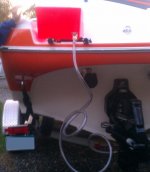john lamon
Well-known member
So I dropped my Dads boat off at the dealer to get winterized about a week ago, I told them I wanted it done fast because they are in a bad location for dust and any time spent there means a lot of time cleaning it up, I told them the boat is kept on a covered lift or in a garage and does not belong outside when not in use, kinda got a funny look on that one but whatever, their yard is packed with boats to do and it looks like it will be a while, the place I work is next door and my car is filthy with dust after a few days because of the gravel road that passes by so I know it is getting dirtier with every day it sits there, I have tried to look online for info on winterizing but can't find any specific info on the 6.2, on the Mercuiser site all it says is take it to your dealer so he can hose you $350.00, I want to get it out of there so I can get it into it's indoor winter storage unit, any tips on doing it safely? I would love to have it taken care of by next weekend when they get home from Cuba, poor bastard thought it's getting too cold here now so they went on a holiday, too cold to boat, might as well go south he said, I would have waited till January, just saying...



 The coldest it gets in CT on an average winter is 0*or maybe even -5*.
The coldest it gets in CT on an average winter is 0*or maybe even -5*.